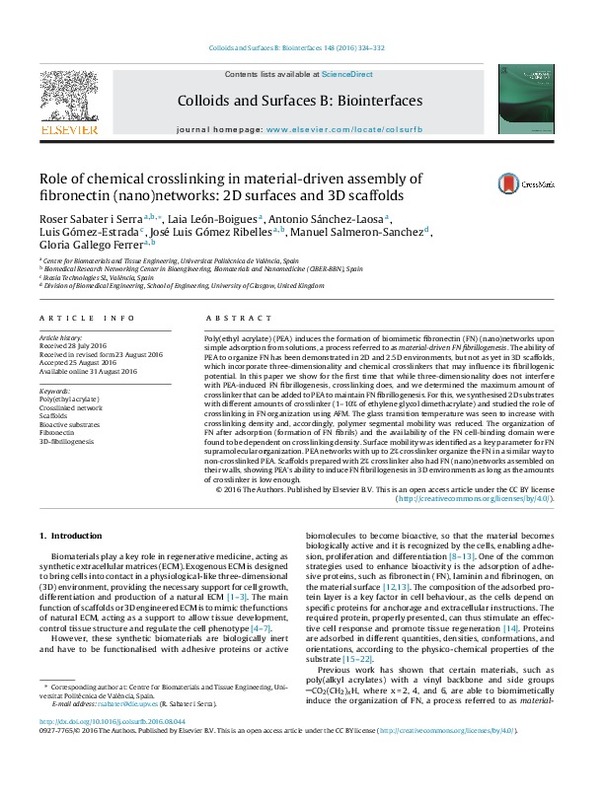JavaScript is disabled for your browser. Some features of this site may not work without it.
Buscar en RiuNet
Listar
Mi cuenta
Estadísticas
Ayuda RiuNet
Admin. UPV
Role of chemical crosslinking in material-driven assembly offibronectin (nano)networks: 2D surfaces and 3D scaffolds
Mostrar el registro completo del ítem
Sabater I Serra, R.; León-Boigues, L.; Sánchez Laosa, A.; Gómez Estrada, L.; Gómez Ribelles, JL.; Salmerón Sánchez, M.; Gallego-Ferrer, G. (2016). Role of chemical crosslinking in material-driven assembly offibronectin (nano)networks: 2D surfaces and 3D scaffolds. Colloids and Surfaces B: Biointerfaces. 148:324-332. https://doi.org/10.1016/j.colsurfb.2016.08.044
Por favor, use este identificador para citar o enlazar este ítem: http://hdl.handle.net/10251/81661
Ficheros en el ítem
Metadatos del ítem
| Título: | Role of chemical crosslinking in material-driven assembly offibronectin (nano)networks: 2D surfaces and 3D scaffolds | |
| Autor: | León-Boigues, Laia Sánchez Laosa, Antonio Gómez Estrada, Luis | |
| Entidad UPV: |
|
|
| Fecha difusión: |
|
|
| Resumen: |
Poly(ethyl acrylate) (PEA) induces the formation of biomimetic fibronectin (FN) (nano)networks uponsimple adsorption from solutions, a process referred to as material-driven FN fibrillogenesis. The ability ofPEA to organize ...[+]
|
|
| Palabras clave: |
|
|
| Derechos de uso: | Reconocimiento (by) | |
| Fuente: |
|
|
| DOI: |
|
|
| Editorial: |
|
|
| Versión del editor: | http://dx.doi.org/10.1016/j.colsurfb.2016.08.044 | |
| Código del Proyecto: |
|
|
| Agradecimientos: |
M.S.S. acknowledges funding from ERC (HealInSynergy 306990) and the UK MRC (MR/L022710/1). The support from the Ministry of Economy and Competitiveness-Spain (MAT2015-69315-C3-1-R Project) including the FEDER financial ...[+]
|
|
| Tipo: |
|









